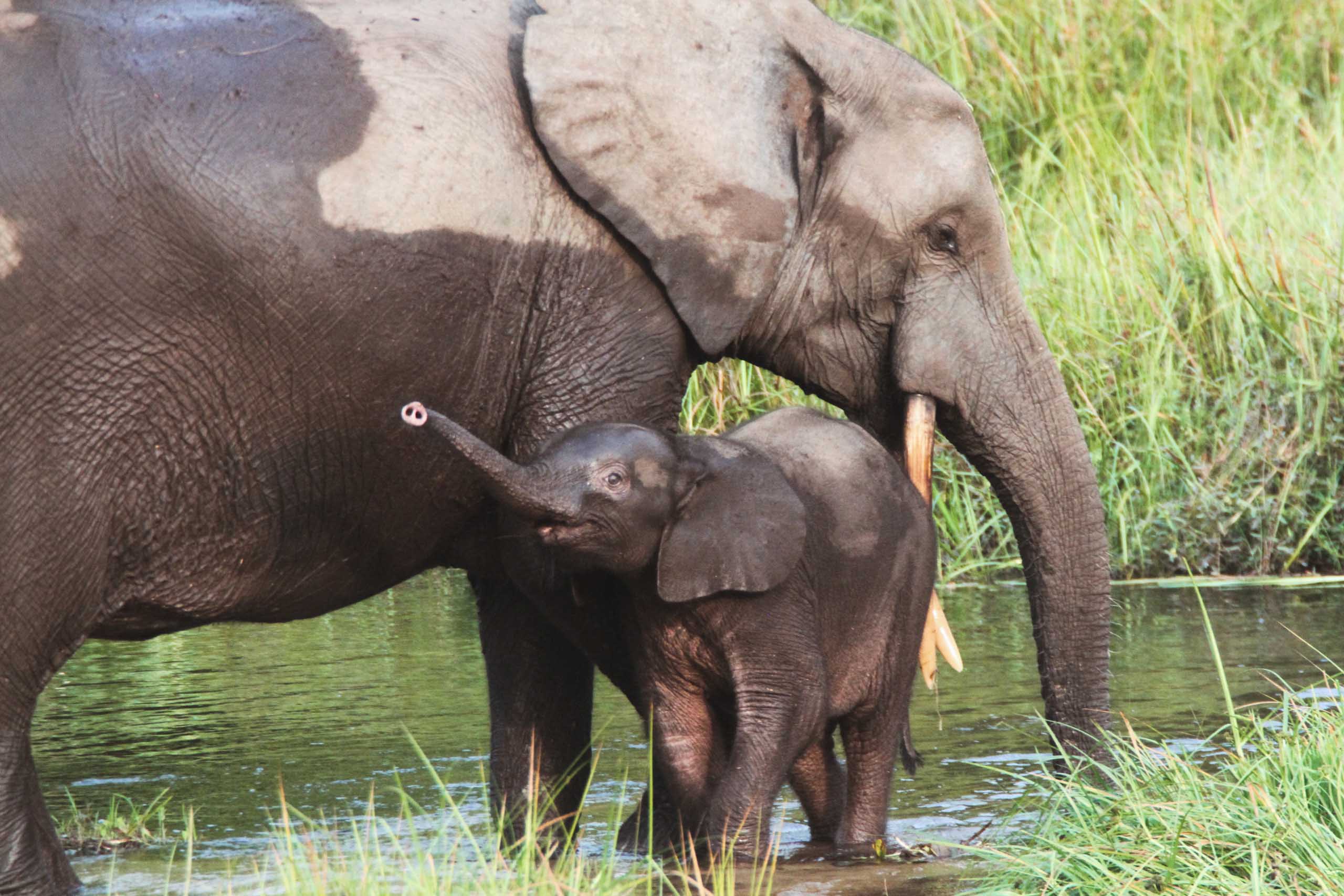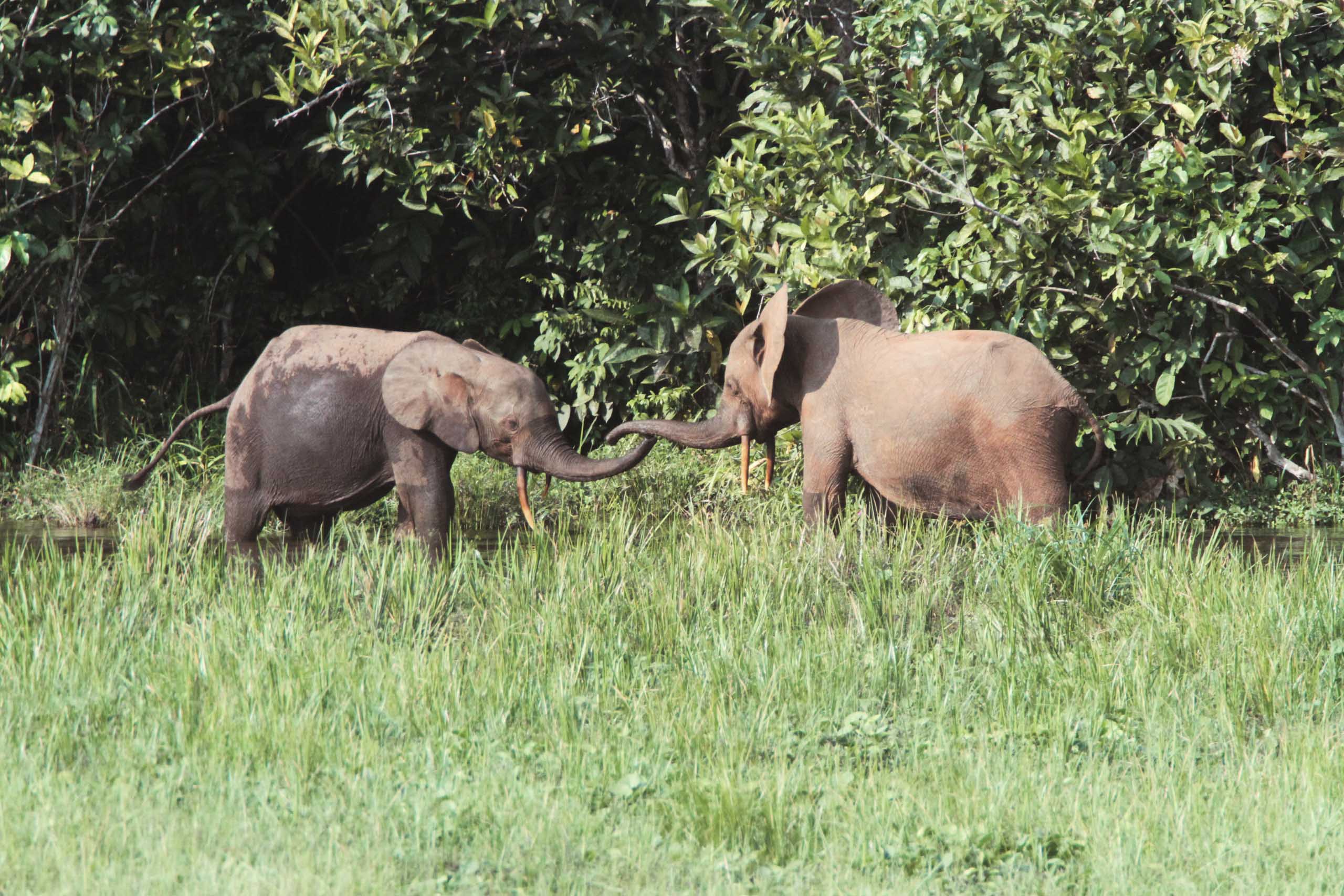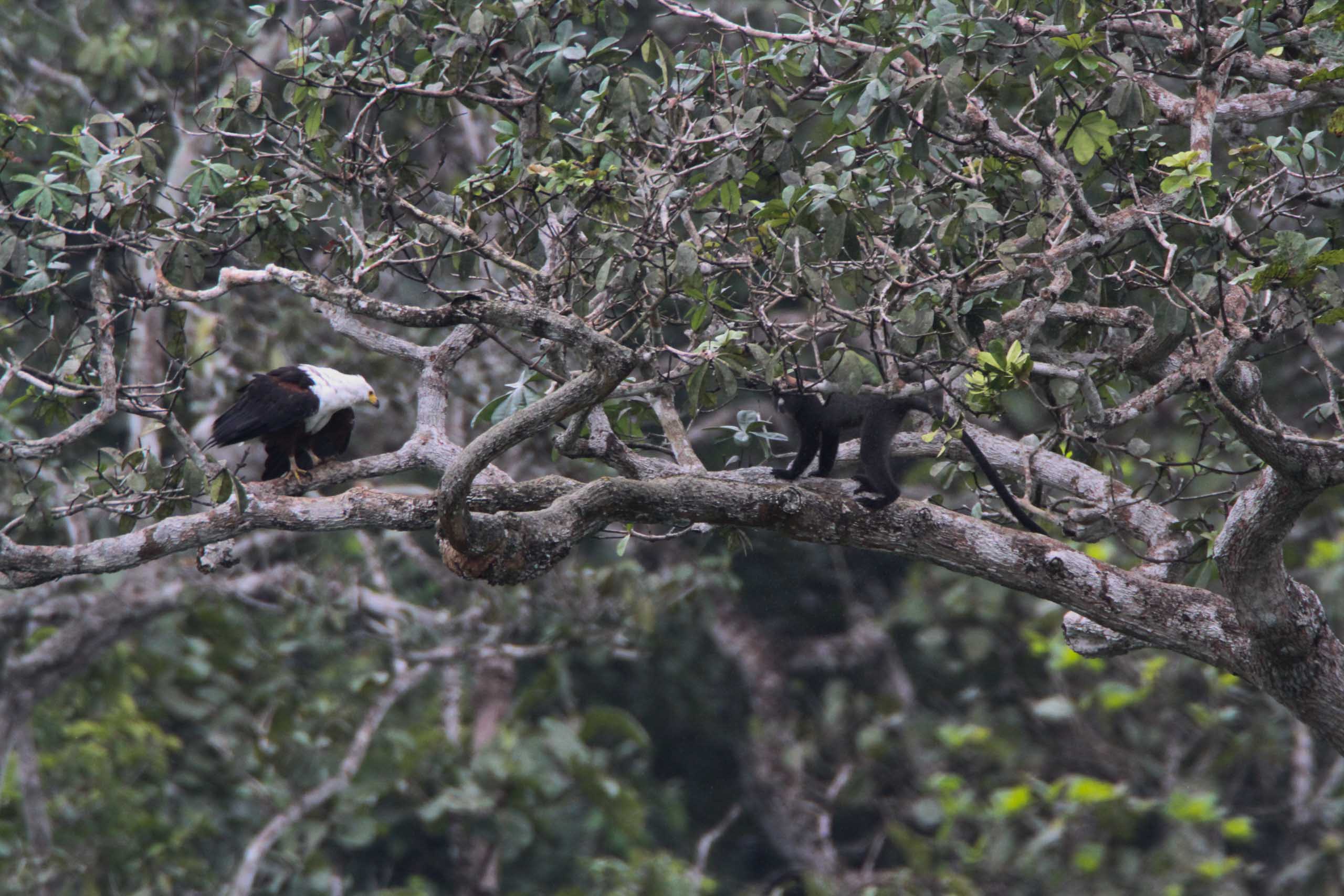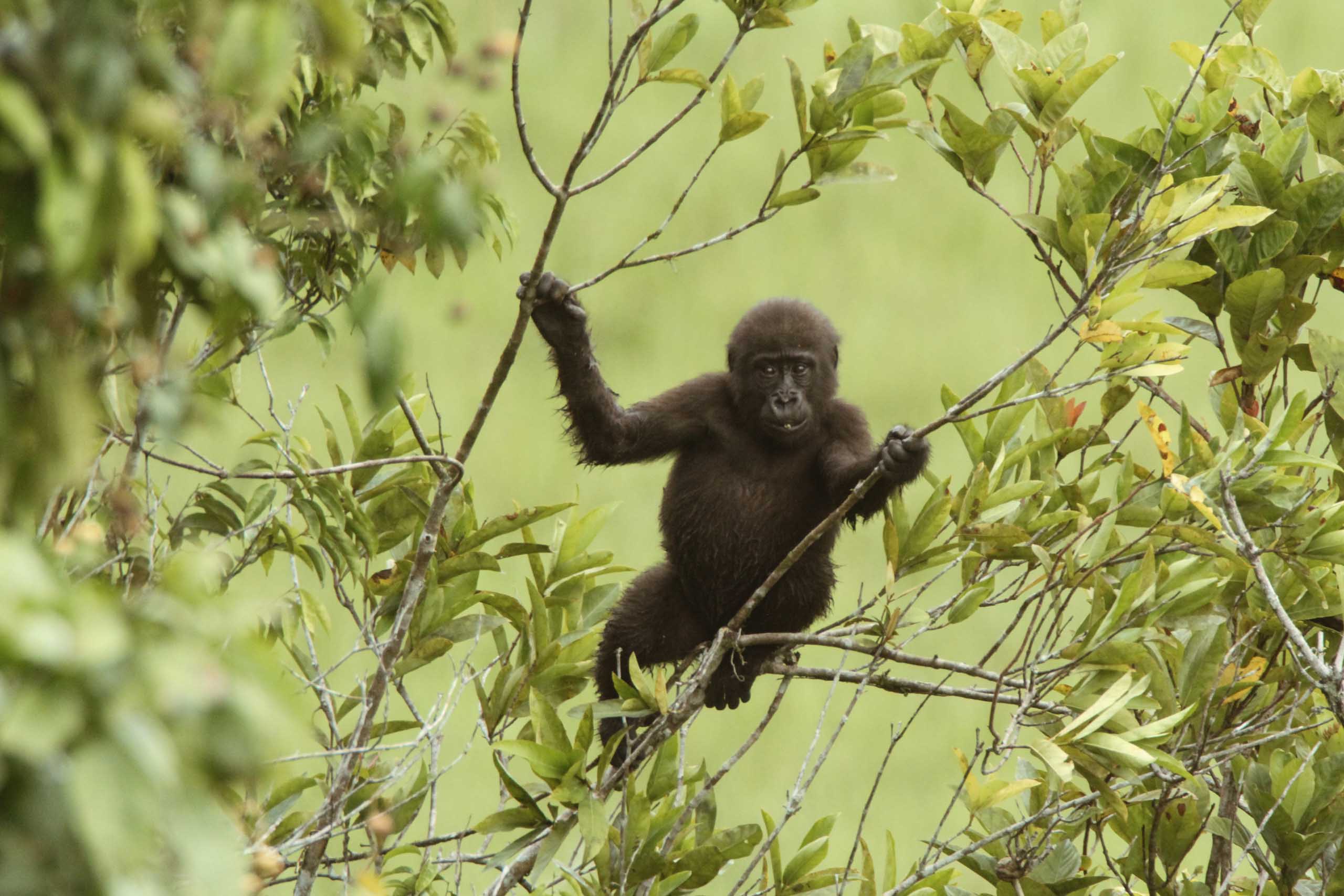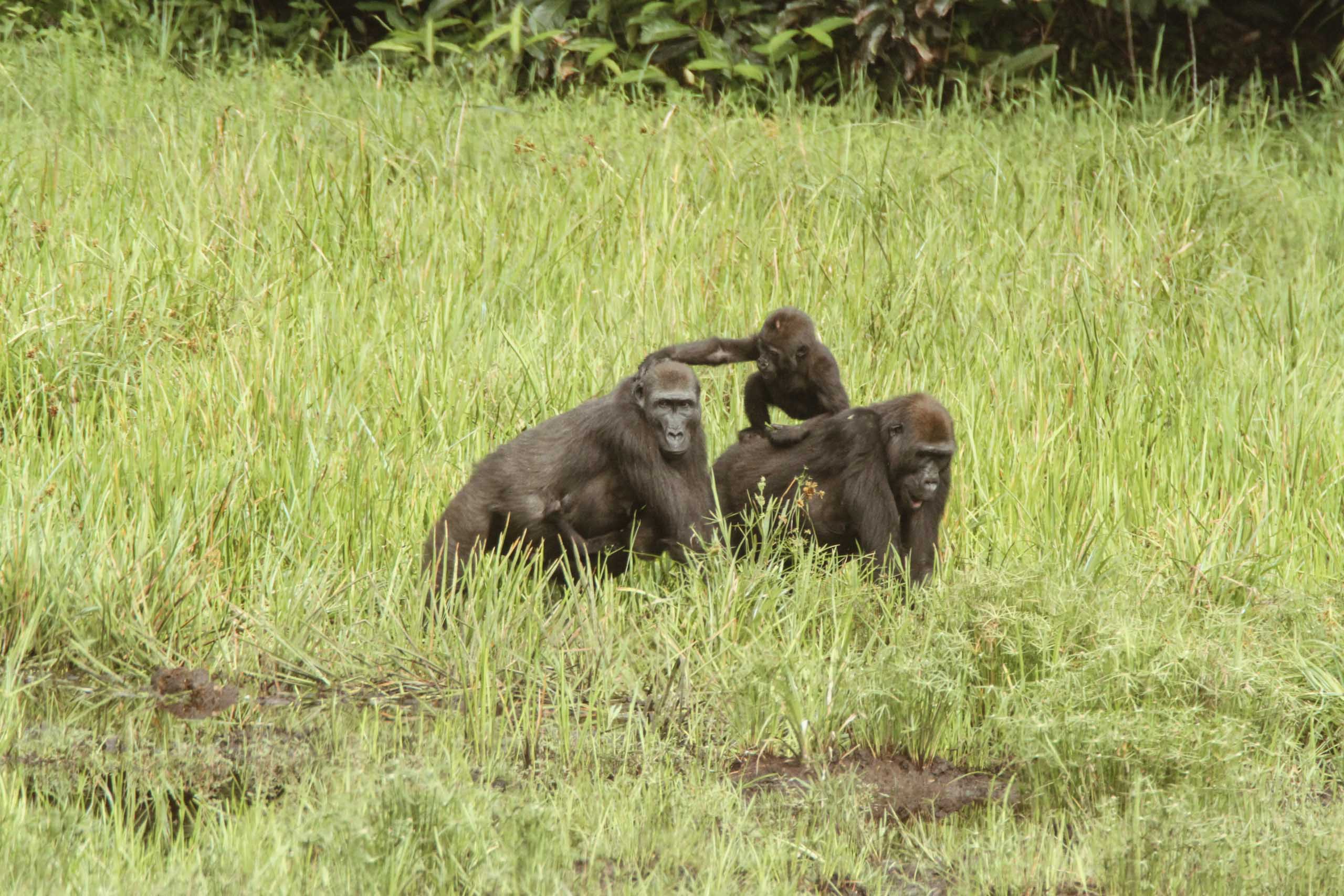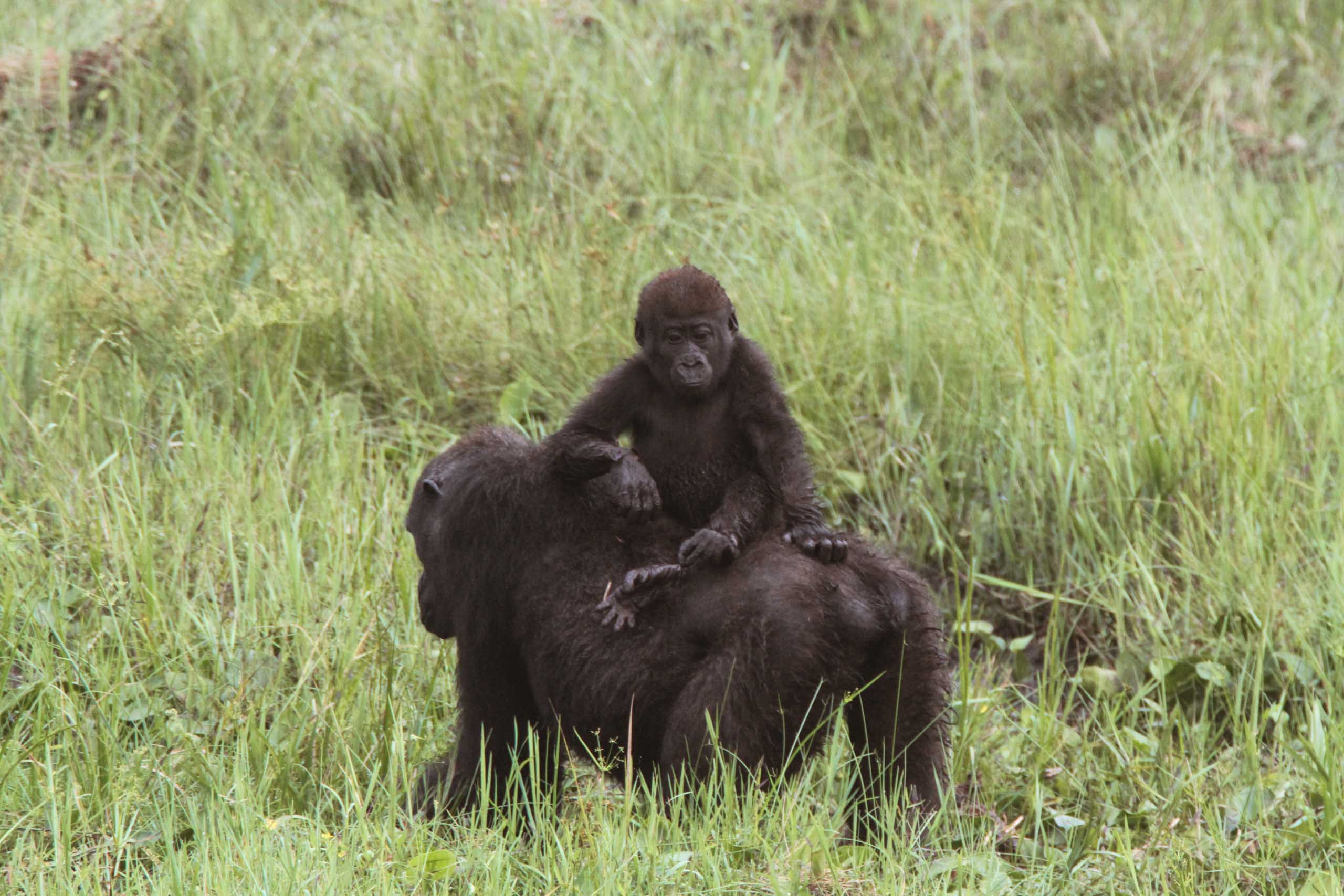Available projects for students
Avaiable projects
Here you will find an overview of available projects. Feel free to contact me if you have any questions.
-
I. Group coordination in forest elephants (Loxodonta cyclotis)
In addition to all the advantages, living in groups confronts social animals with a fundamental organizational problem. Despite all conflicting individual interests, how is it decided where the group will go, when and how? Forest elephants, unlike the larger Savannah elephants, form small groups, often consisting of their own family but without adult males. How these small groups navigate in their natural habitat and whether an individual takes over the leadership of the group remains unknown to date. > 150 videos are available for analysis to uncover this aspect of the social behaviour of these critically endangered animals. Videos were recorded on a natural forest clearing in the Nouabalé Ndoki National Park in the northern Republic of Congo and document the arrival, movement and departure of groups of forest elephants.
-
II. Heterospecific eavesdropping in putty-nosed monkeys (Cercopithecus nictitans)
Forest guenons use specific alarm calls depending on the nature of the threat. Receivers of these context-dependent calls are thus able to adapt their behaviour threat-specifically and to protect themselves and their offspring from e.g. predation. Monkeys often roam around in rain forests in groups composed of several species. This increases the number of attentive sentinels and dangers are discovered faster. Even alarm calls from other species are often understood and the behaviour to alarm calls of one's own species often corresponds to that to alarm calls of another species in the same situation. Is the understanding of heterospecific calls learned or is it innate? And do different populations of the same species understand each other flawlessly? Recordings of systematic playback experiments with putty-nosed monkeys conducted in Ivory Coast and in the Republic of the Congo are acoustically analysed to answer these questions.
III. Infant mortality in western lowland gorillas (Gorilla gorilla gorilla)
Gorillas reproduce slowly, usually around 5 years between births and infants are dependent on their mother for a long time. The slow reproduction of these endangered great apes is further complicated by high infant mortality for which neither exact numbers nor clear reasons are known. How high is the mortality rate of infant western lowland gorillas and what factors account for the survival probability? Using the demographic database of the world's longest (> 25 years) field study of western lowland gorillas - the Mbeli Baï project - birth rates, sex ratios and mortality of young animals are analysed, and the influence of maternal experience, seasons and other social factors such as group size and stability are investigated. Mbeli Baï is located in the Nouabalé-Ndoki National Park in the north of the Republic of the Congo and has been a UNESCO World Heritage Site since 2012.

